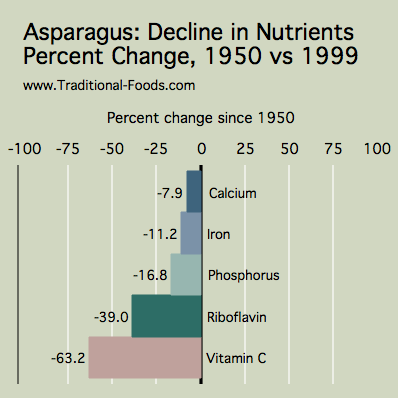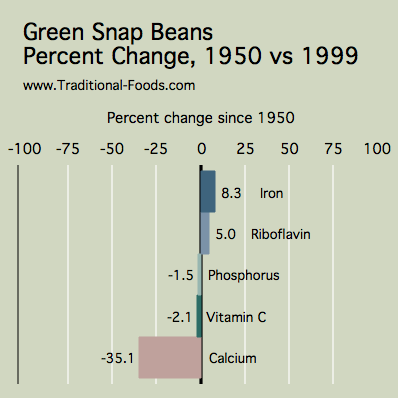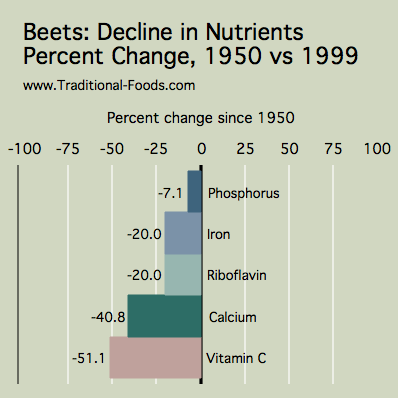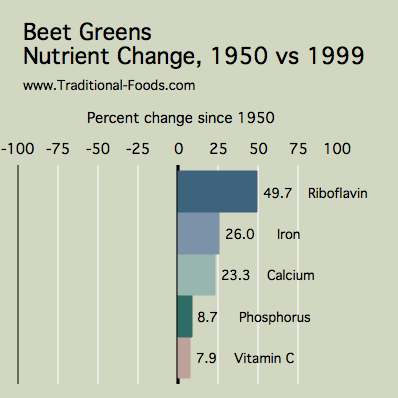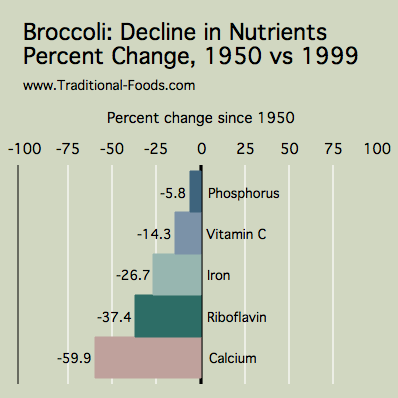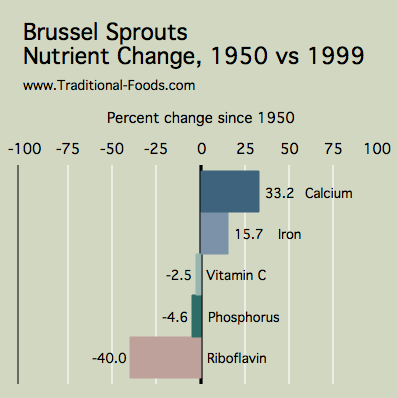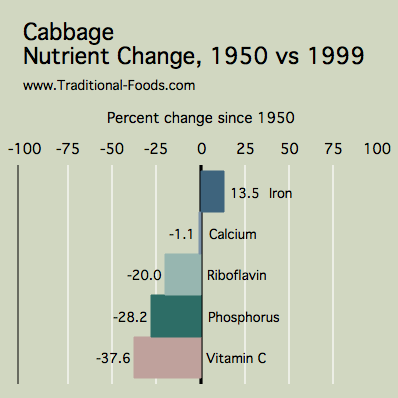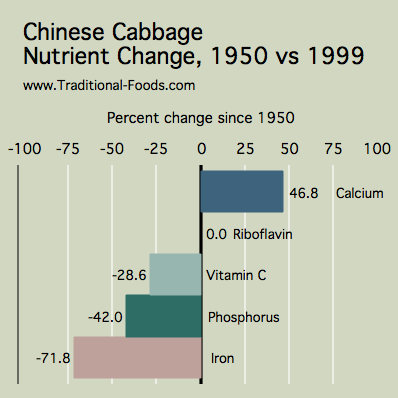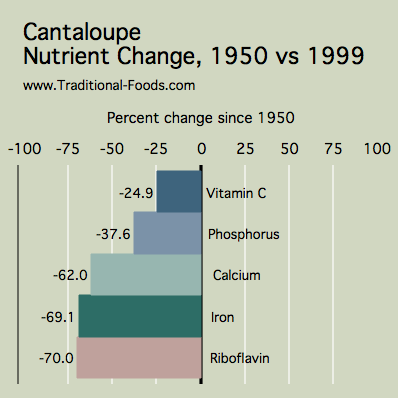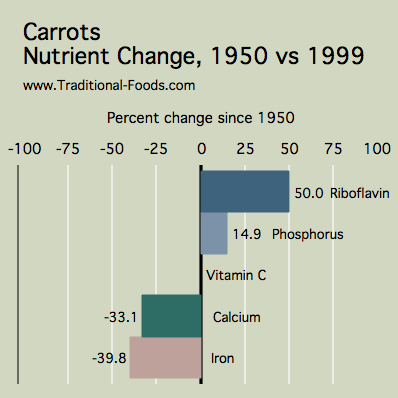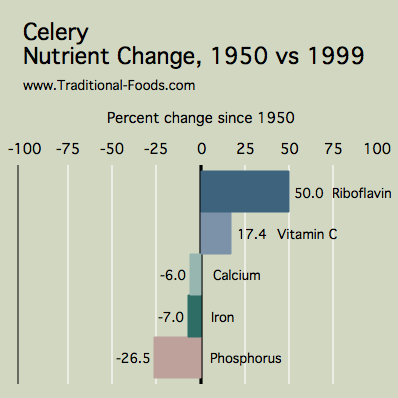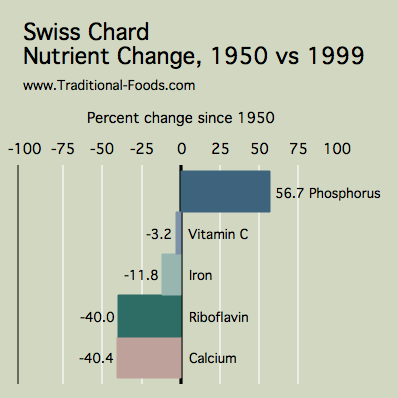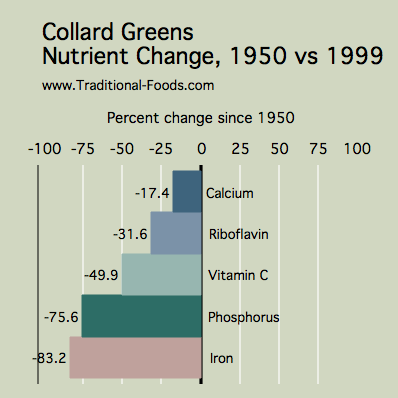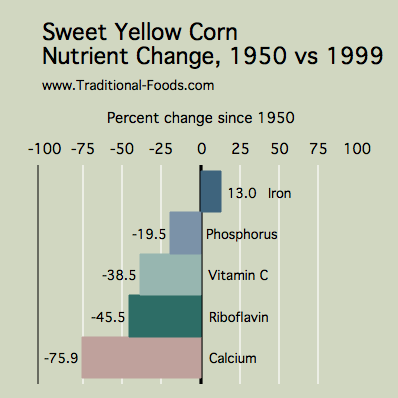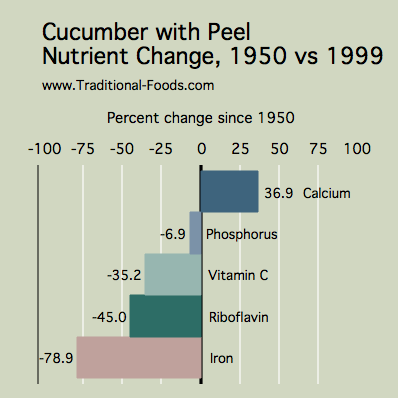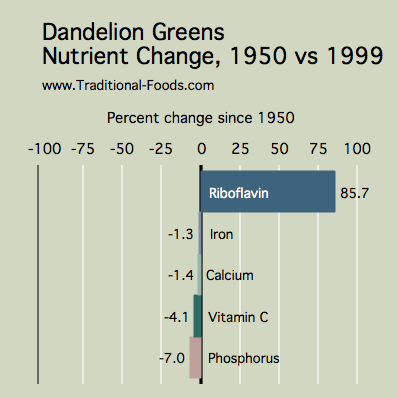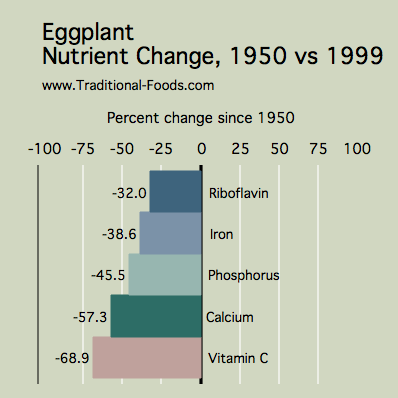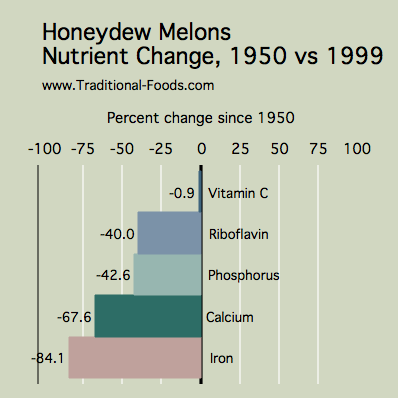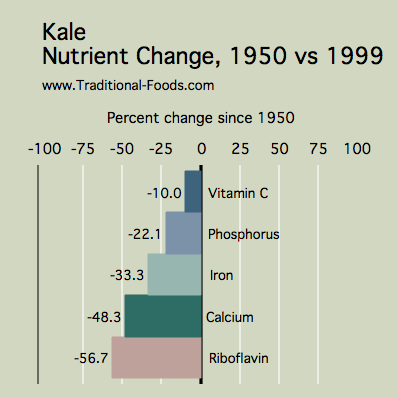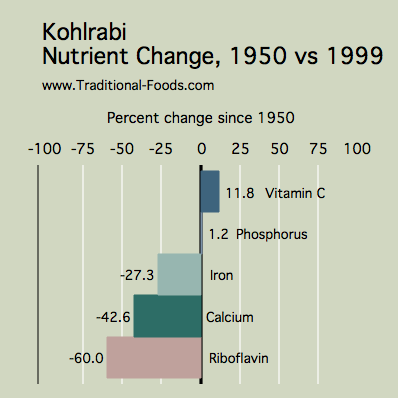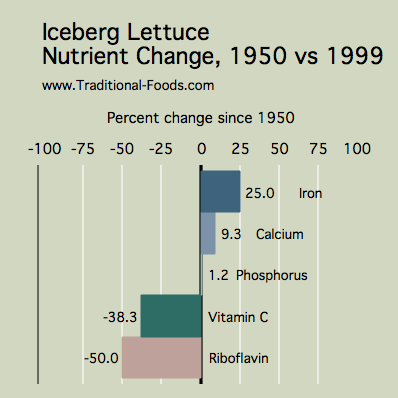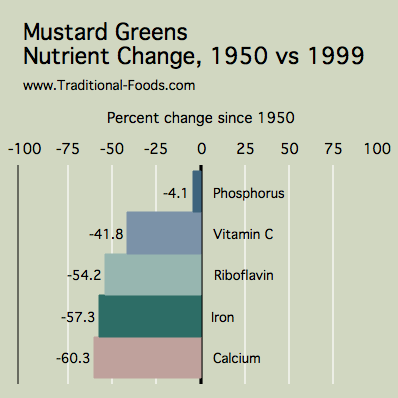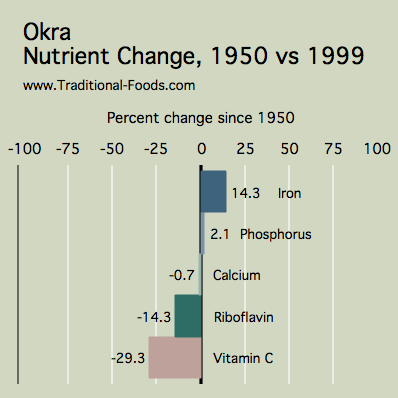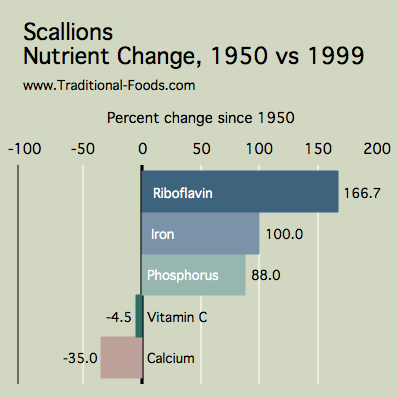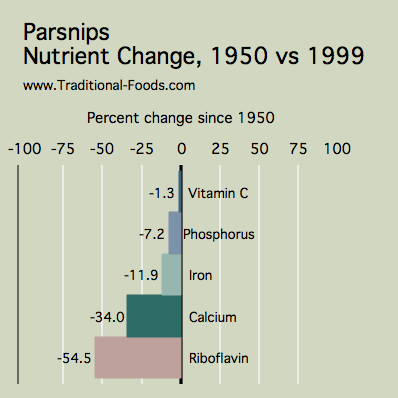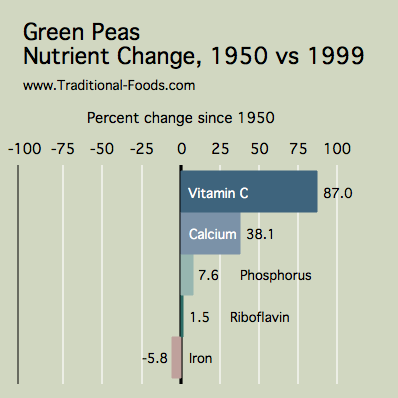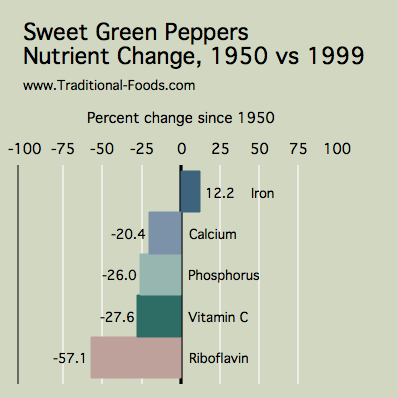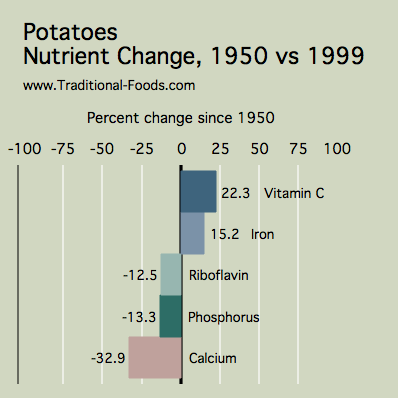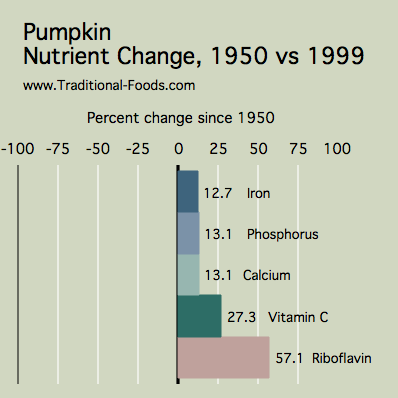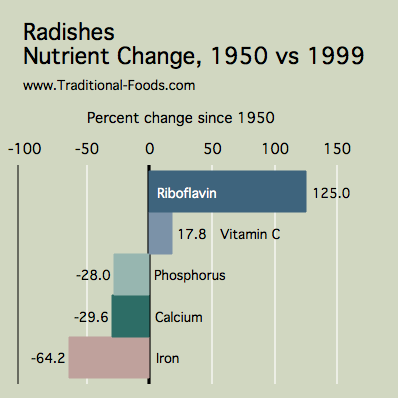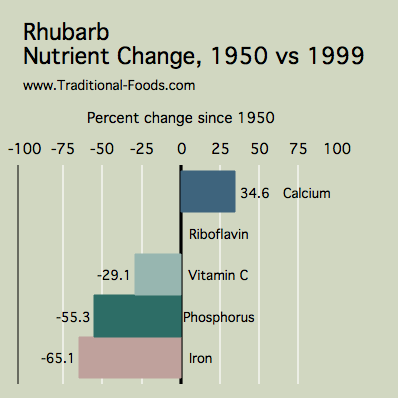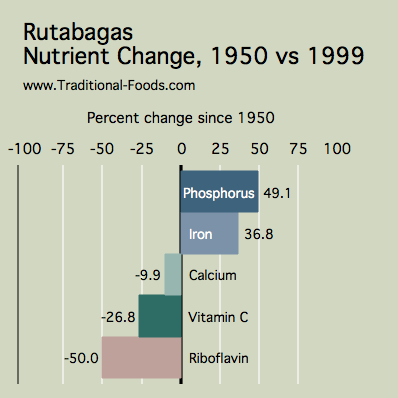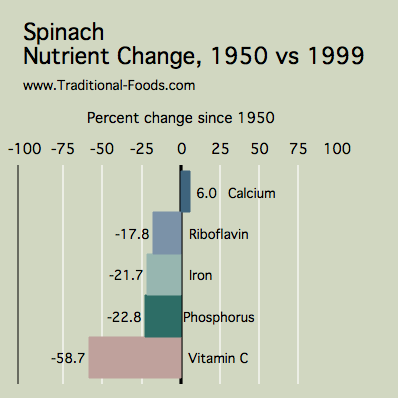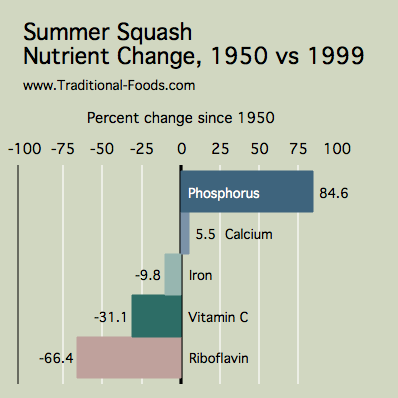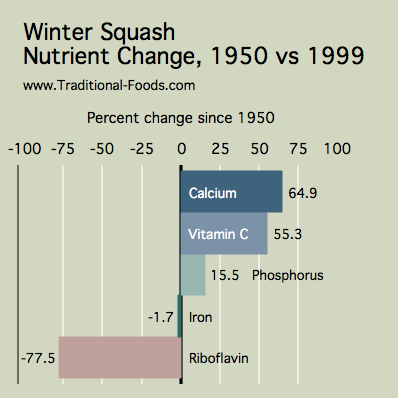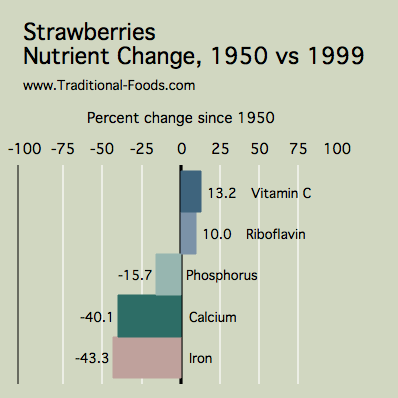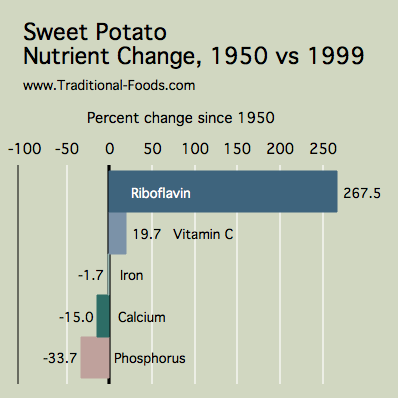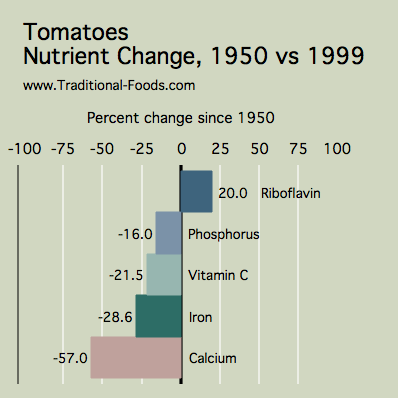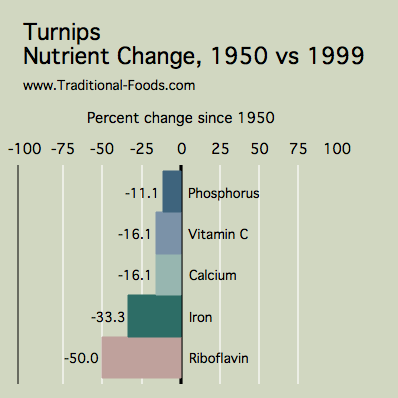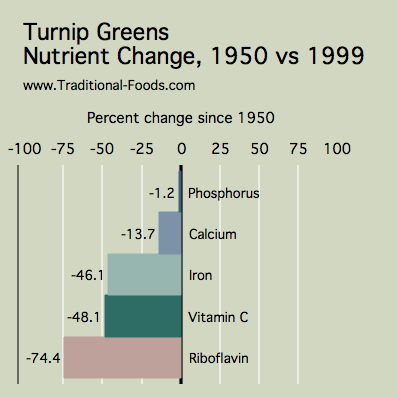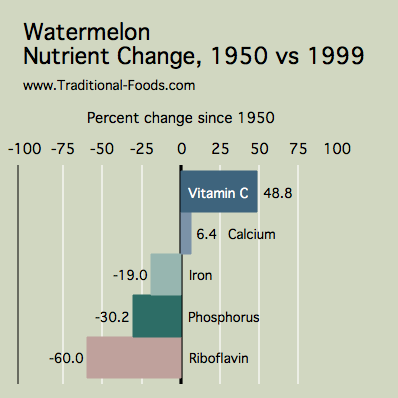Visiting the dusty archives of a food science library you will find that the U.S. Department of Agriculture has been compiling data on the nutrient content of food since the late 1800s. Laura Ingalls Wilder of Little House on The Prairie was raising her daughter Rose on the prairie when the government began to jot down basic nutrients in food. As nutrients have been discovered and measures have been improved, the USDA’s nutrient data collection has become an impressive, now warehousing nutrient values for nearly 150 food components and 8,000 foods.
This long-lived data project has provided an opportunity for food scientists to track change in the nutrient composition of food. In the 1980s, observers became concerned about the apparent decline in nutritional content of garden crops. In both American and British data on food composition, nutrient content appeared to be on the decline. An editor of Organic Gardening magazine suggested that use of chemical fertilizers and subsequent decline in soil minerals was the cause. A peer reviewed study of the data provides another explanation: commercial cultivation of seed has traded nutrient density for yield, pest resistance, and transportability, factors critical to the commercial success of any crop.
Nutrient Decline in Garden Crops
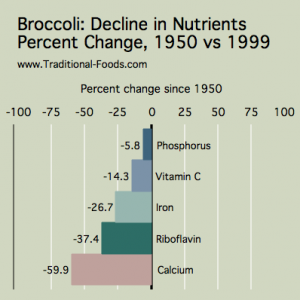 Indeed, the data show a decline that is rather alarming. When you consider how difficult it is to get a child to eat broccoli, it is disheartening to discover that they really need to eat about 50% more of it these days.
Indeed, the data show a decline that is rather alarming. When you consider how difficult it is to get a child to eat broccoli, it is disheartening to discover that they really need to eat about 50% more of it these days.
Researchers at the University of Texas at Austin examined the data published by the USDA in 1950 and 1999 for small garden crops, adjusted the data for the water content of food (as we do in the graphs provided on this site), and found a statistically significant decline in protein, calcium, phosphorus, iron, riboflavin, and ascorbic acid (vitamin C). Read the study here.
The UTA researchers took their analysis a step further to describe why we have observed a decline.
They argue that there is no evidence for the soil depletion hypothesis. This hypothesis suggests that when modern farm fertilizers add commercial NPK fertilizer (nitrogen, phosphorus, and potassium) without replacing the broad spectrum of nutrients in healthy soil, plants have less nutrition to take up from the soil now than they did decades ago. Researchers point to the fact that both protein (nitrogen) and phosphorus are part of the commercial NPK fertilizer package and yet both have declined.
Why would phosphorus decline if it is being added to the soil?
The researchers argue that any one plant may take up only so much phosphorus. When a plant has been bred to produce a large vegetable, the farmer’s yield increases because the weight of the crop increases, but the same amount of phosphorus is distributed across the same larger vegetable making each bite of this new crop less nourishing. In general, any time that commercial seed is selected based on factors that make a crop profitable (yield and pest resistance) there will be a trade off in other characteristics (nutrition).
The key cause in this story may be commercial seed stock — seed that does make your broccoli cheaper but seed that makes it less nourishing at the same time.
Strategies to Improve Nutrient Density
The research on nutrient decline leaves us with obvious strategies to implement while shopping and even gardening, if you are lucky enough to garden. We must find produce grown from seed that was not developed for commercial production. When buying produce, you can shop for heirlooms. When buying garden seed, look for heirloom, non-hybridized, open-pollinated seed.
Eat Heirloom Produce
An “heirloom” vegetable simply means that it has been around for over fifty years and that its seeds are true, producing the same item the next season. Heirlooms have not been selected for commercial cultivation and bred for pest resistance, yield, and more. This isyour grandmother’s spinach.
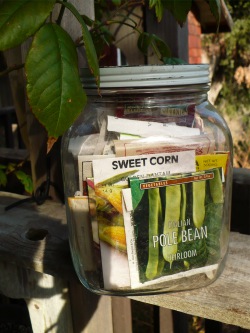 Heirlooms have grown in popularity largely because the flavor tends to be exquisite. The colors and shapes may be unusual too, adding to your culinary experience. Add to these points that your dinner may also be loaded with more calcium, iron, phosphorous, and vitamin C and you really can’t miss.
Heirlooms have grown in popularity largely because the flavor tends to be exquisite. The colors and shapes may be unusual too, adding to your culinary experience. Add to these points that your dinner may also be loaded with more calcium, iron, phosphorous, and vitamin C and you really can’t miss.
In shopping for heirloom produce, your best bet is at a local farmer’s market. Simply ask the farmer whether the vegetable or fruit is an heirloom. You can often tell by the look of the crop — it may be smaller or a different shape than what you can find at a regular grocery store.
For your garden, heirloom seeds are usually described as “heirloom” given the growing market for them. You will certainly want to avoid seeds that have been hybridized opting instead for open-pollinated seeds (as indicated by “OP” on the seed package; hybridized seed will be labeled as “F1″). Read our resource onbuying garden seed.
Compost Your Garden
 Though these particular data do not suggest that historic decline in nutrients is caused by soil infertility, it is the case that your garden soil can get worn out and produce a lackluster crop. Your yield will be much lower and the food itself may have a lower nutritional content.
Though these particular data do not suggest that historic decline in nutrients is caused by soil infertility, it is the case that your garden soil can get worn out and produce a lackluster crop. Your yield will be much lower and the food itself may have a lower nutritional content.
If you garden, add finished compost to your garden at least annually and at best at the end of each gardening season. Read our resource on garden compost for more information.
Share the Knowledge
On the Traditional Foods website we are struck enough by this trend toward nutrient decline that we have dedicated a portion of the website to helping people create a successful home garden. Do read more about gardening if you would like to start one.
These data are also more compelling when put in the context of specific food items, rather than some general trend. We have taken the time to provide the data on individual foods so that you can browse through them and perhaps point them out to a skeptical spouse. You can even post them on your blog. We offer the graphs below with a couple of caveats:
- These data are based on very small sample sizes in some cases. Nutrient content varies by season and location and so there is large variation among samples even in the same year. As a result, the change for no one food is actually statistically significant. I would not go to the grave claiming that broccoli declined 60% in calcium. I would go to the grave claiming that you need to eat a lot more of the commercially cultivated “Marathon” broccoli than an heirloom broccoli if you want a high-calcium vegetable.
- With the natural variation in nutrient content, not every vegetable fits the trend but the trend is there nonetheless.
Creative Commons Graphs and Data
Check out the graphs and data through the links below. Use them non-commercially as you wish, linking back to this resource. Subscribe to our feed for more articles on this topic.
'庫間 > 해외자료' 카테고리의 다른 글
| 1930년대 이후 옥수수와 콩이 미국의 초원을 쓸어버렸다 (0) | 2013.02.24 |
|---|---|
| 프랑스 와인의 잔류농약 문제 (0) | 2013.02.24 |
| 생물연료 전환과 미국 Prairieland의 황진지대 비율 (0) | 2013.02.24 |
| 무경운 농법이 식량안보의 핵심 (0) | 2013.02.22 |
| 중국의 "곡물 기적"의 뒷이야기 (0) | 2013.02.22 |
